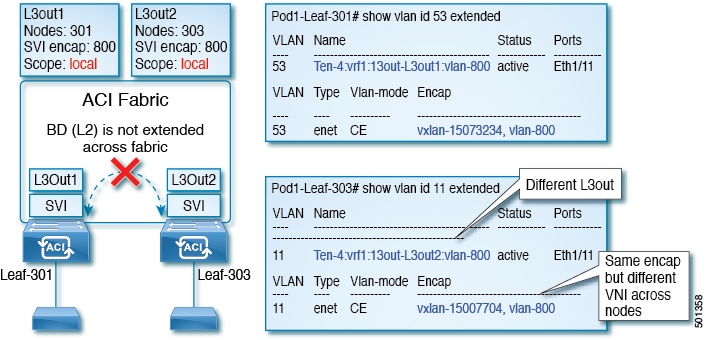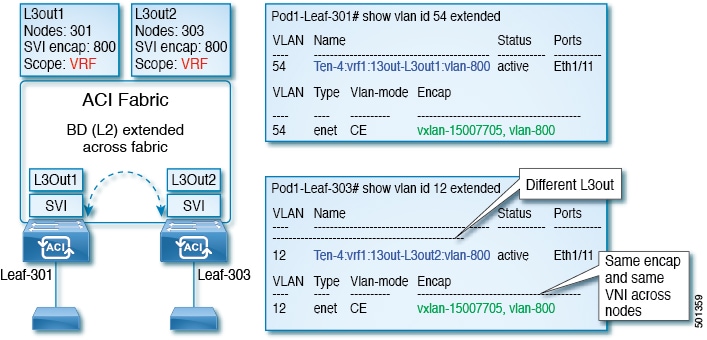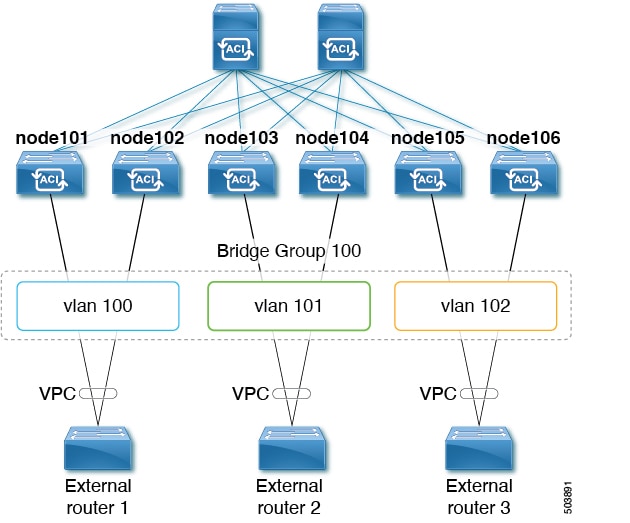Modifying Interfaces for L3Out Using the GUI
This procedure modifies an L3Out interface.
 Note |
The steps for filling out the fields are not necessarily listed in the same order that you see them in the GUI. |
Before you begin
-
The Cisco ACI fabric is installed, the Cisco APICs are online, and the Cisco APIC cluster is formed and healthy.
-
A Cisco APIC fabric administrator account is available that enables creating the necessary fabric infrastructure configurations.
-
The target leaf switches are registered in the Cisco ACI fabric and available.
-
Port channels are configured when port channels are used for L3Out interfaces.
Procedure
|
Step 1 |
On the menu bar, choose . |
|
Step 2 |
In the Work pane, double click the tenant's name. |
|
Step 3 |
In the Navigation pane, expand and choose the profile that you want to modify. |
|
Step 4 |
Choose an interface type tab: Routed Sub-Interfaces, Routed Interfaces, SVI, or Floating SVI. |
|
Step 5 |
Double click an existing interface to modify it, or click the Create (+) button to add a new interface to the logical interface profile. |
|
Step 6 |
For interface types other than floating SVI, perform the following substeps: |
|
Step 7 |
For the floating SVI interface type, in the Anchor Node drop-down list, choose a node. |
|
Step 8 |
(Optional) In the Description field, enter a description of the L3Out interface. |
|
Step 9 |
For the routed sub-interfaces, SVI, and floating SVI interface types, in the Encap drop-down list, choose VLAN and enter an integer value for this entry. |
|
Step 10 |
For the SVI and floating SVI interface types, perform the following substeps: |
|
Step 11 |
In the IPv4 Primary / IPv6 Preferred Address field, enter the primary IP addresses of the path attached to the Layer 3 outside profile. |
|
Step 12 |
In the IPv4 Secondary / IPv6 Additional Addresses table, click the + to enter the secondary IP addresses of the path attached to the Layer 3 outside profile. |
|
Step 13 |
(Optional) In the Link-local Address field, enter an IPv6 link-local address. This is the override of the system-generated IPv6 link-local address. |
|
Step 14 |
In the MAC Address field, enter the MAC address of the path attached to the Layer 3 outside profile. |
|
Step 15 |
In the MTU (bytes) field, set the maximum transmit unit of the external network. The range is 576 to 9216. To inherit the value, enter inherit in the field. |
|
Step 16 |
In the Target DSCP drop-down list, choose the target differentiated services code point (DSCP) of the path attached to the Layer 3 outside profile. |
|
Step 17 |
Click Submit. |




 Feedback
Feedback